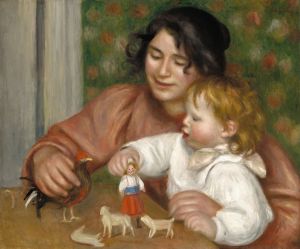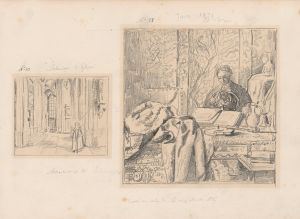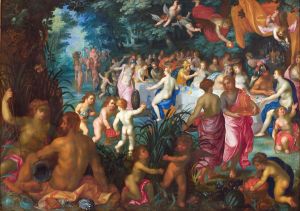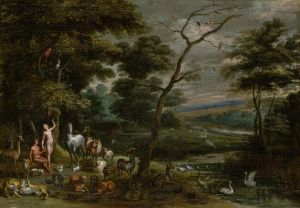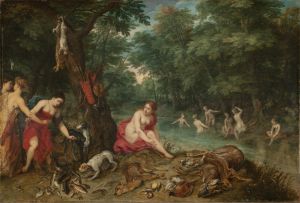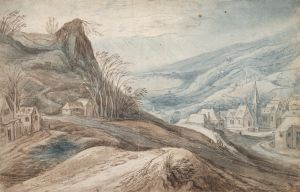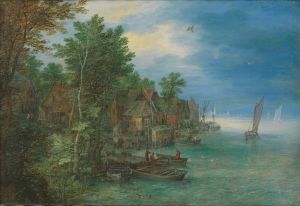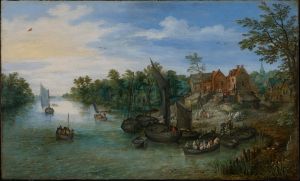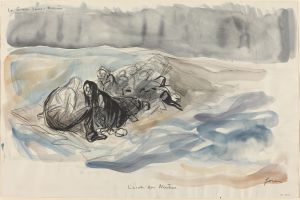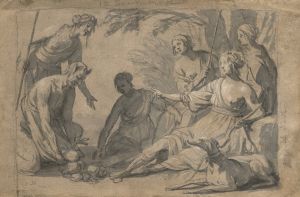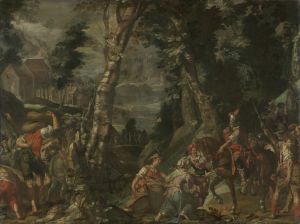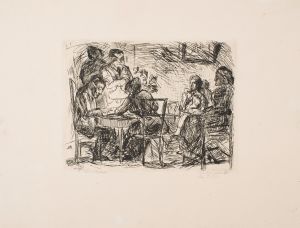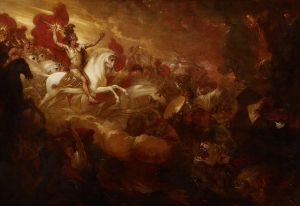
Latona and the Lycian Peasants
A hand-painted replica of Jan Brueghel The Elder’s masterpiece Latona and the Lycian Peasants, meticulously crafted by professional artists to capture the true essence of the original. Each piece is created with museum-quality canvas and rare mineral pigments, carefully painted by experienced artists with delicate brushstrokes and rich, layered colors to perfectly recreate the texture of the original artwork. Unlike machine-printed reproductions, this hand-painted version brings the painting to life, infused with the artist’s emotions and skill in every stroke. Whether for personal collection or home decoration, it instantly elevates the artistic atmosphere of any space.
"Latona and the Lycian Peasants" is a painting by the renowned Flemish artist Jan Brueghel the Elder, who was active during the late 16th and early 17th centuries. Jan Brueghel the Elder was part of the famous Brueghel family of painters, known for their detailed landscapes and vivid depictions of biblical and mythological scenes. This particular work is an example of Brueghel's ability to blend intricate detail with narrative storytelling.
The painting illustrates a scene from Ovid's "Metamorphoses," a classical Latin narrative poem that has been a rich source of inspiration for artists throughout history. The story depicted in the painting involves the goddess Latona, known in Greek mythology as Leto, and her encounter with the Lycian peasants. According to the myth, Latona, after giving birth to the twin deities Apollo and Artemis, was wandering the earth in search of a place to rest and drink water. When she arrived in Lycia, she attempted to drink from a pond, but the local peasants refused her access, stirring the water to muddy it and prevent her from quenching her thirst.
In response to their insolence, Latona transformed the peasants into frogs, condemning them to live in the mud and water they had used to deny her. This mythological transformation is a central theme of the painting, capturing the moment of divine retribution with dramatic effect. Brueghel's work is noted for its meticulous attention to detail, and in "Latona and the Lycian Peasants," he skillfully renders the landscape, the figures of Latona and the peasants, and the transformative moment with precision and clarity.
The painting is characterized by Brueghel's typical use of vibrant colors and his ability to convey the lushness of the natural environment. The landscape is depicted with a sense of depth and realism, showcasing Brueghel's mastery in creating atmospheric perspective. The figures are animated and expressive, capturing the tension and drama of the mythological narrative.
Jan Brueghel the Elder's work often involved collaboration with other artists, including Peter Paul Rubens, although there is no specific evidence to suggest that "Latona and the Lycian Peasants" was a collaborative effort. Brueghel's paintings were highly sought after during his lifetime, and his ability to depict complex scenes with clarity and beauty contributed to his reputation as one of the leading artists of his time.
"Latona and the Lycian Peasants" reflects the broader artistic trends of the Baroque period, which emphasized movement, vivid detail, and emotional intensity. Brueghel's interpretation of the myth not only illustrates the narrative but also invites viewers to reflect on themes of divine justice and transformation.
The painting is part of the rich tradition of European art that draws on classical mythology to explore human and divine interactions. It remains an important example of Jan Brueghel the Elder's work and continues to be appreciated for its artistic and historical significance.





